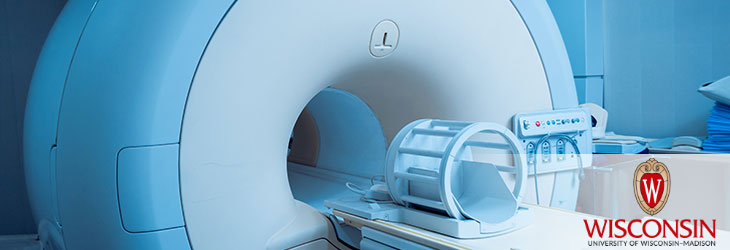Radiation Therapy

Treatment Planning Algorithm for Implanting Radioactive Seeds During Brachytherapy
WARF: P07528US
Inventors: Douglass Henderson, Bruce Thomadsen, Vibha Chaswal
The Wisconsin Alumni Research Foundation (WARF) is seeking commercial partners interested in developing a faster and more accurate non-iterative treatment planning algorithm for implant brachytherapy.
Overview
Brachytherapy is a radiation therapy that places the source of irradiation, called a “seed,” into the tumor (interstitial brachytherapy) or inside a body cavity (intracavitary brachytherapy). Brachytherapy can be an effective alternative to surgical removal of a tumor for the treatment of breast, cervical, lung, prostate, rectal, tongue and uterine cancers.
Precise planning is necessary when performing brachytherapy and various optimization methods exist for the placement of multiple seeds. Determining the radiation dose from a known seed pattern is straightforward, but determining the best seed pattern for a required dose is mathematically difficult. Normally an iterative method is used, but can require up to an hour on high-speed computers. A previous invention by UW–Madison researchers (see WARF reference number P03016US) proposed a technique that iteratively determines the seed placement with an “importance function” by locking the seeds into place one by one until a full pattern is achieved. This reduces processing time substantially, but still utilizes an iterative method.
Precise planning is necessary when performing brachytherapy and various optimization methods exist for the placement of multiple seeds. Determining the radiation dose from a known seed pattern is straightforward, but determining the best seed pattern for a required dose is mathematically difficult. Normally an iterative method is used, but can require up to an hour on high-speed computers. A previous invention by UW–Madison researchers (see WARF reference number P03016US) proposed a technique that iteratively determines the seed placement with an “importance function” by locking the seeds into place one by one until a full pattern is achieved. This reduces processing time substantially, but still utilizes an iterative method.
The Invention
UW–Madison researchers have developed a non-iterative treatment planning algorithm for implant brachytherapy. The algorithm builds off the previous invention to create a faster and more accurate treatment planning algorithm.
The method starts by determining what doses are required for specific locations in the area of interest. An importance function is developed based on the match between the original dose pattern and a hypothetical seed moved through the different locations in the pattern. The locations then are ranked and reserved for a seed in the order of importance. Every time a seed is reserved, the original dose pattern is updated to show the difference between the current dose pattern and the dose provided by seeds at the reserved locations. This difference then is used to update the importance function. These steps are repeated until a predetermined criterion is met.
The method starts by determining what doses are required for specific locations in the area of interest. An importance function is developed based on the match between the original dose pattern and a hypothetical seed moved through the different locations in the pattern. The locations then are ranked and reserved for a seed in the order of importance. Every time a seed is reserved, the original dose pattern is updated to show the difference between the current dose pattern and the dose provided by seeds at the reserved locations. This difference then is used to update the importance function. These steps are repeated until a predetermined criterion is met.
Applications
- Interstitial and intracavitary brachytherapy
- Radiation therapy for cancers of the breast, cervix, lung, prostate, rectum, tongue and uterus
Key Benefits
- Increases treatment planning speed
- Increases accuracy of treatment planning
Additional Information
For More Information About the Inventors
Related Technologies
Tech Fields
For current licensing status, please contact Jeanine Burmania at [javascript protected email address] or 608-960-9846